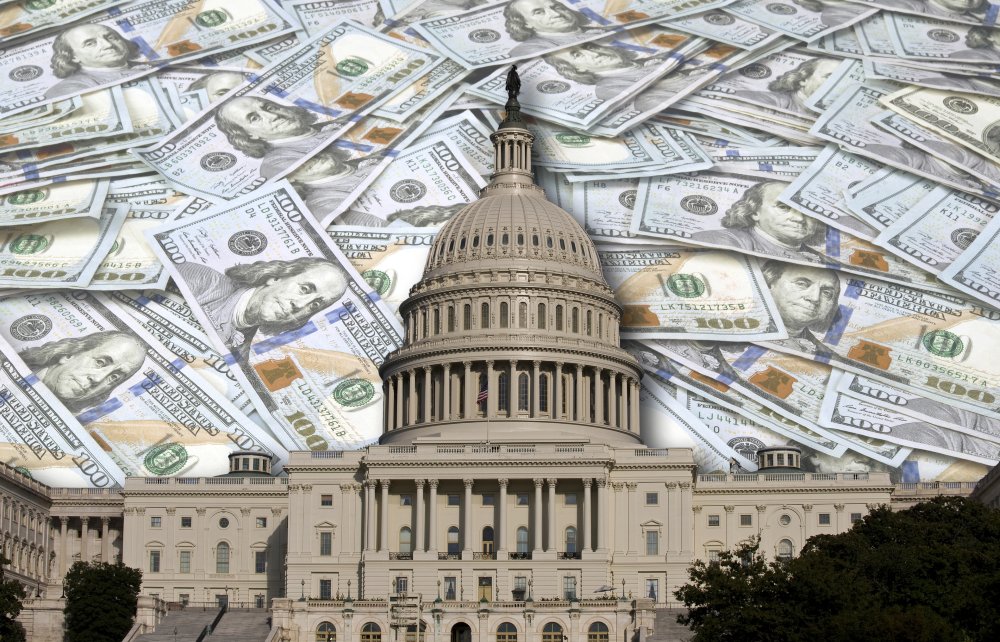May 20, 2025

The bill for reconciliation budget that is currently being considered in the American House of Representatives would be the economic profit of the renewable energy industry.
The so -called “Big, Beautiful Bill” contains most of the legislative agenda of President Donald Trump, but the Megabill also contains large cuts on renewable energy. As is currently built, the legislation refers to the financing of the 2022 Inflation Reduction Act and withdraws tax credits for clean energy that have stimulated the domestic development and production of solar sun in the last three years.
The renewable power production sector currently contributes $ 18 billion to the US GDP annually, speaks $ 33 billion in domestic expenses annually and supports 122,000 jobs in the United States, according to the American Clean Power Association (ACP). The production of renewable electricity is expected to support more than 575,000 jobs and contribute $ 86 billion to GDP annually by 2030, if all announced production facilities become operational in the United States.
However, that could all be endangered with the approval of the reconciliation budget Bill.
Big, beautiful wild -warning from Seia
Without changes, the proponents from the industry say that The bill could eliminate nearly 300 American solar and storage factories Built and lead to the loss of 145,000 GWH from Zonne generation by 2030, according to the Solar Energy Industries Association (SEIA). The bill can lead to the loss of nearly 300,000 current and future American jobs, including 86,000 in the production of solar energy.
New Analysis released The SEIA warns that the Budget Act, if determined, could cause an immediate decrease in investment in solar energy and storage. By 2030, up to $ 220 billion in investments could be lost.
About 80% of all risky factories, jobs and investments in the solar industry are in states that voted for Trump.
“There is still time to improve this bill, which, as written, is a crisis for America’s ability to build the energy infrastructure that we need to meet the rising demand,” said Seia President and CEO Abigail Ross Hopper. “If this proposal becomes law, almost 300 American factories, usually in red states, can close or never open, and we will simply not have the energy we need to provide American innovation in AI and data centers.”
The United States must add new energy capacity by 2030 206.5 GW, whereby the solar energy is expected to deliver 73% of those capacity additives. Without solar energy and storage, the United States will have an energy shortage that increases utility accounts and slows economic growth, according to SEIA.
The budget account would also withdraw the 25D residential tax credit section, an important engine from Energy Freedom for middle class families. Introductory remains households without an accessible path to lower their costs with solar energy.
“Passing on this bill would create a catastrophic energy shortage, create AI and technical leadership of China and damage some of the most vital sectors of the US economy,” Hopper added. “But the story is not over. The Senate has the opportunity to propose a more thoughtful and measured proposal that the American energy dominance vision of President Trump reaches.”
State of the production of clean energy
According to the newly released of the ACP State of the production of clean energy in America reportThe renewable industry has laid the foundation for a safe domestic supply chain, revitalizing production communities and stimulating American competition on world stage.
“Stricting commitment to clean energy is the creation of new production facilities throughout the country. This success will create hundreds of thousands of jobs and revitalize American communities if policy leaders will produce economic progress compared to the partnery division,” said Jason Grumet, CEO of ACP. “Today’s report shows that the production activities in the Sector of Schone Energie stimulate a ripple effect of economic growth that extends far beyond the factory walls and reaches every corner of the country. Restoring this critical supply chain requires a shared effort by both industry and worldwide growth and worldwide.”
The ACP report shows that more than 800 factories are currently contributing to the supply chain of the American renewable energy, with at least one in every state. In the meantime, 200 existing production facilities are actively building primary renewable current components in 38 states to meet the flourishing demand for new energy in the United States.
With 200 production facilities for renewable electricity in the pipeline, which represent more than $ 150 billion in investments, the ACP report shows that if all announced facilities become operational in 2030, the production of renewable electricity can support more than 575,000 jobs, more than $ 40 billion can add $ 86 billion to $ 86 billion. Output on the output on the output on the output on the output on the output on the output annually.
The ACP report describes how these economic and work benefits are largely made possible because of federal tax credits for clean energy that were established in 2022. The report calls on policymakers to build on this historic American production defense with a series of targeted policy tools to continue the momentum. They include:
- The preservation of energy tax credits (45x, 45y, 48c, 48th).
- Creating a stable and strategic trade environment.
- Facilitating a real all-of-the-top above energy strategy.
- Streamlining able to benefit American manufacturers and their customers.
- Taking care of the critical mineral policy uses the demand from electricity manufacturers of domestic clean energy.
The bill for reconciling the house is expected to be considered by the house rules committee on Wednesday, where policy makers will discuss how the bill on the floor will be discussed.
Tags: policy, tax credit

